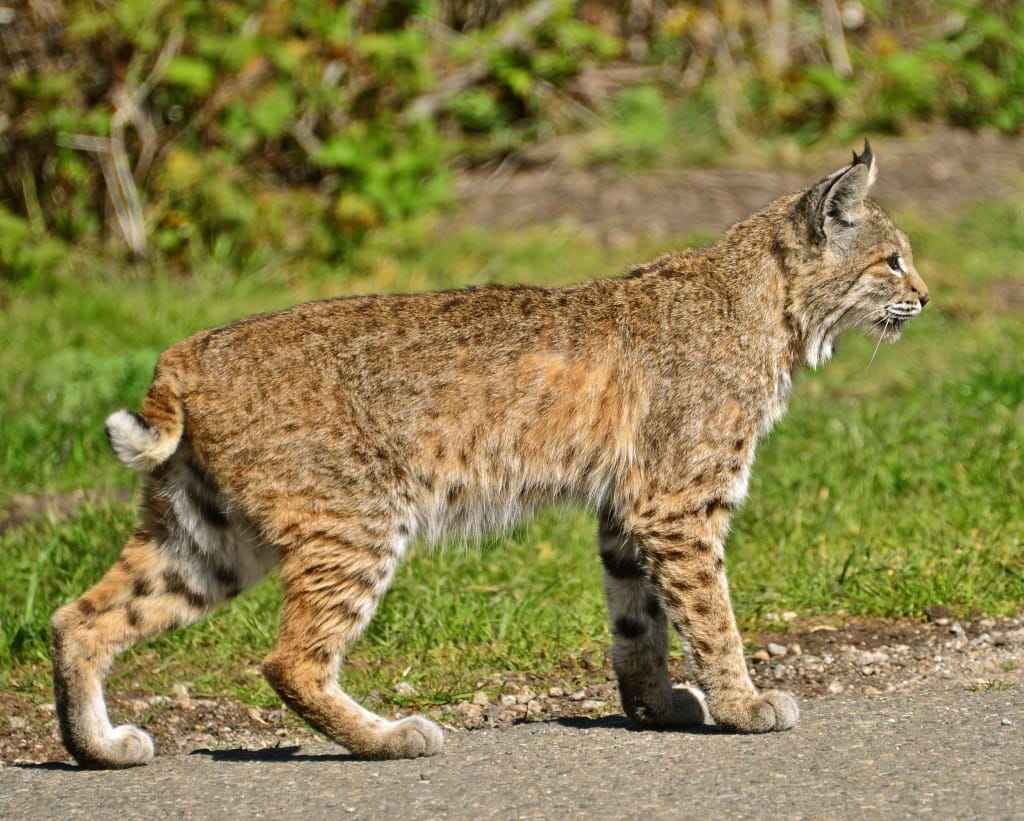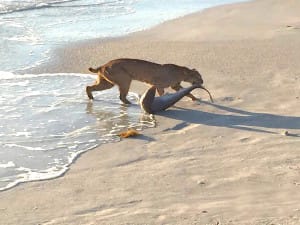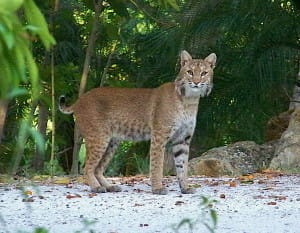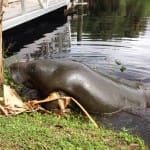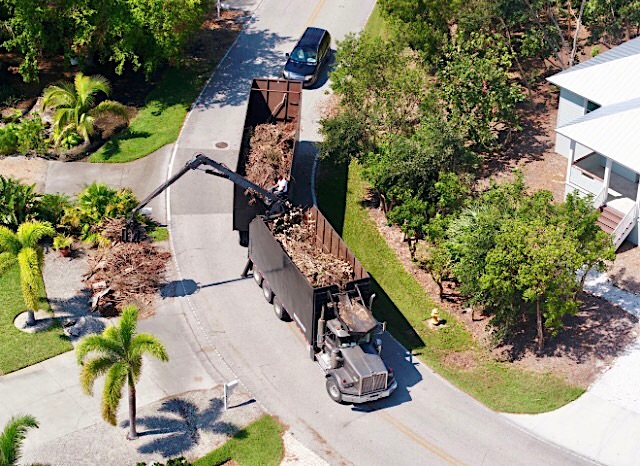
Sanibel Bobcat Tales: Bobcats Play A Big Role On Sanibel & Captiva Islands.
“Bobcat: Master of Survival” is how author Kevin Hansen describes Lynx rufus.
While other wild feline species are in trouble, bobcats seem to be flourishing through most of their North American range and this adaptable feline’s ability to survive close to humans is one of the reasons for the bobcat’s success. Rats and mice can make up to 40% of the bobcat’s diet.
Bobcats are prospering on Sanibel & Captiva and a big part of our ecosystem.
Here’s some background on bobcats from FWC.
“The female bobcat can breed after one year which occurs in late winter or early spring. In Florida, bobcats breed from August to March with the peak in February and March. One to four young are born after a gestation period (the period in which offspring are carried in the uterus) of 50 to 60 days. The average litter size is two to three kittens, and the young have mottled or spotted fur with more distinct facial marking than the adults, but their eyes do not open until about nine days old. The young are weaned in about two months, but not before they are taught hunting skills by their parents.
An efficient hunter, the bobcat, like most felines, hunts by sight and usually at night, but seeing a bobcat out during the day is not uncommon because they sleep for only 2 to 3 hours at a time. Small mammals are by far the most important group of prey animals. In Florida, squirrels, rabbits, rats, opossums, and small raccoons are the primary prey species. Ocassionally, a bobcat will take a feral cat, especially if there is a high population of cats in the area. By feeding on these animals, the bobcat provides a necessary control on their populations.
Since Florida is also an important wintering habitat for migrating birds, the bobcat’s winter diet reflects this abundance and includes ground-dwelling birds such as towhees, robins, catbirds and thrashers. It is extremely uncommon for a bobcat to attack a person. Like most wildlife species, bobcats have a natural fear of people. However, they may lose this fear if they are taught to associate people with food. FWC recommends that all food and garbage be secured so as not to unnaturally attract bobcats or other wildlife.
The Florida bobcat’s unpredictable disposition does not make it a popular candidate for a pet. Nor does its strikingly marked pelt have much market value. Catching even a fleeting glimpse of this secretive and beautiful creature, however, can make anyone’s outdoor experience more enjoyable.
You can receive technical assistance for bobcat problems by contacting your nearest FWC regional office.”
Sanibel Bobcat Tales Wednesday at 10 a.m. in the SCCF auditorium.
Cost of the program is $5 per adult, with members and children attending for free.
For location details and more information, please see calendar.

